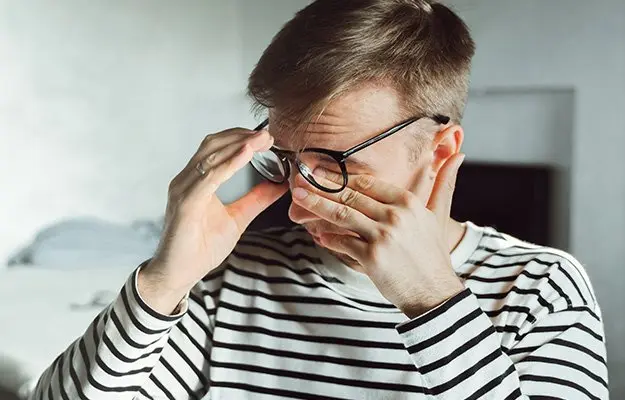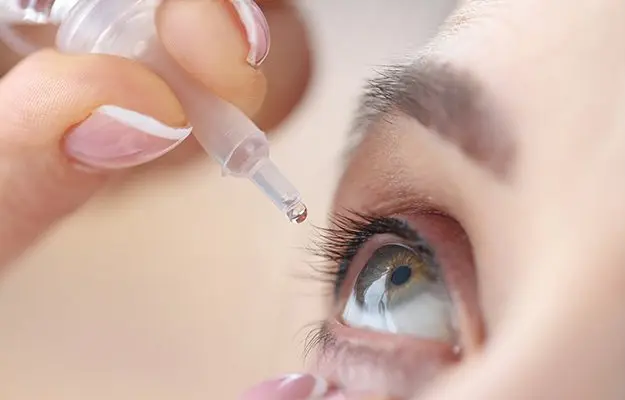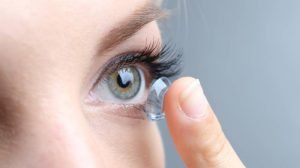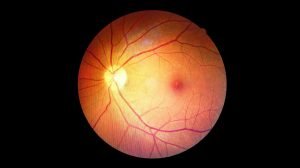In modern life, digital screens have become indispensable, from work computers and smartphones to tablets and entertainment TVs. We spend hours each day staring at these devices, but have you ever wondered if your eyes are being overstressed? Digital eye strain, also known as computer vision syndrome (CVS), is a common health issue many people face.
This article from European Eye Center will help you understand digital eye strain, its causes and symptoms, why blinking is so crucial, and how to effectively protect your eyes, especially with the well-known 20-20-20 Rule.
What is Digital Eye Strain?
Digital eye strain is a group of eye and vision-related problems that arise or worsen from prolonged use of digital screens. It’s a widespread condition affecting all age groups, from children learning online to adults working in offices.

Main Causes of Digital Eye Strain:
Digital eye strain isn’t caused by just one factor but a combination of several:
- Screen Glare: Glare from the screen itself or from surrounding light reflecting off the screen can increase eye strain.
- Blue Light Exposure: Digital devices emit high-energy blue light, which can cause eye fatigue, disrupt sleep, and potentially pose long-term risks to the retina.
- Improper Screen Distance and Angle: Placing the screen too close or too far, or at an unoptimized viewing angle, forces your eyes to work harder.
- Uncorrected Vision Problems: Refractive errors like nearsightedness, farsightedness, astigmatism, or presbyopia that aren’t properly corrected will make your eyes more prone to strain when looking at screens.
- Prolonged Screen Time: Continuously staring at a screen for many hours without breaks is a primary cause.
Common Symptoms of Digital Eye Strain:
If you regularly spend long hours in front of a screen, you might notice one or more of these symptoms:
- Eye Fatigue: A heavy, tense feeling in the eyes.
- Blurred Vision: Difficulty seeing clearly, especially when shifting focus from the screen to distant objects and vice versa.
- Dry Eyes: A gritty, burning, stinging sensation, or redness in the eyes.
- Headaches: Often felt in the forehead or temples.
- Neck and Shoulder Pain: Due to maintaining an unnatural posture while looking at the screen.
- Difficulty Concentrating: Trouble maintaining attention on tasks.
- Light Sensitivity (Photophobia): Feeling uncomfortable when exposed to bright light.
- Difficulty Sleeping: Blue light can interfere with your body’s natural sleep cycle.
>> Effective Home Remedies for Dry Eyes & Advanced Treatment Options
The Link Between Blinking and Digital Eye Strain
Did you know that blinking is directly related to the stability of your tear film and the overall comfort of your eyes?
On average, an adult typically blinks about 15-20 times per minute. Blinking is an involuntary reflex that plays an extremely important role:
- Cleansing and Lubricating Eyes: Each blink spreads tears from the lacrimal glands evenly across the corneal surface, helping to wash away tiny dust particles and providing nutrients and oxygen to the eyes.
- Preventing Infections: Regular eye cleansing helps prevent the accumulation of harmful bacteria.
- Mental Clarity: Recent research also suggests that blinking gives the brain brief “micro-breaks,” which can enhance mental clarity after prolonged periods of concentration.
What Happens When We Blink Less?
When you blink less frequently than normal, your eyes can experience several issues:
- Severe Dry Eyes: Tears aren’t spread evenly, leading to dryness, irritation, redness, and a burning sensation.
- Reduced Vision: An unstable tear film can cause temporary blurry vision.
- Increased Infection Risk: Accumulated dust and bacteria aren’t washed away, and reduced oxygen increases the risk of eye infections.
- Corneal Swelling: The cornea needs a lot of moisture to function smoothly as it has no blood vessels. When you blink less, the cornea can suffer severe oxygen deprivation, leading to swelling and long-term blurred vision.
Why Do We Blink Less When Looking at Screens?
Although blinking is a natural reflex, we tend to blink less when we are highly focused on a specific object or task. Staring intently at computer screens, tablets, or phones is a prime example. Studies have shown that when staring at screens, the blink rate can decrease by up to 60%, contributing to digital eye strain and dry eyes.
In today’s booming digital age, eye problems related to screens are becoming increasingly common, even in children, due to growing screen time.
Effective Solutions: The 20-20-20 Rule & Other Tips to Protect Your Eyes
The 20-20-20 Rule is a simple and extremely effective technique to minimize and prevent digital eye strain. It encourages you to take regular breaks after periods of screen use to reduce stress and discomfort for your eyes.
How the 20-20-20 Rule Works:
- Every 20 Minutes: Set a timer or remind yourself to take a break every 20 minutes of working or using a digital device.
- Look at Something 20 Feet Away: During your break, shift your focus to an object in the distance, about 20 feet (approximately 6 meters) away. This allows your eye muscles to relax and reduces strain.
- For At Least 20 Seconds: Maintain your gaze on the distant object for at least 20 seconds. During this time, remember to blink several times to re-moisturize your eyes and reduce the risk of dryness and irritation.
>> Comprehensive Eye Care From the Inside Out
Other Useful Tips to Prevent Digital Eye Strain:
In addition to the 20-20-20 rule, you can adopt these tips to further protect your eyes:
- Adjust Your Screen:
- Increase Text Size: Set the text size on your screen large enough so you can read easily without squinting.
- Maintain Proper Distance: Position your screen about an arm’s length (about 50-70 cm) from your eyes.
- Lower Screen Brightness: Adjust screen brightness to match the surrounding light, avoiding too much glare or too much darkness.
- Adjust Contrast and Color Temperature: Increase contrast for easier readability and use “warm light” or “reading mode” settings in the evening to reduce blue light.
- Use Eye Drops: Use artificial tears to supplement moisture for your eyes, especially when you feel dryness.
- Wear Specialized Glasses: If you work with screens frequently, ask your doctor about blue light filtering glasses or glasses with anti-glare coatings to reduce eye strain.
- Regular Eye Exams: Have your eyes checked regularly by an ophthalmologist to detect and promptly treat any vision problems or underlying eye conditions.
- Improve Your Workspace Environment: Ensure sufficient natural light, avoid direct glare from windows or lights. Maintain good air humidity in the room (if using air conditioning).
>> Read more: Health and Travel Combined: Medical Tourism in Vietnam
Conclusion
Digital eye strain is a common challenge in the technological age. However, by applying the 20-20-20 Rule and other simple preventive measures, you can significantly reduce uncomfortable symptoms and protect your long-term eye health.
Don’t let screen-time work or entertainment negatively impact your precious eyes. Be proactive in caring for your vision, and if you have any concerns about your eyesight, don’t hesitate to seek professional advice.









